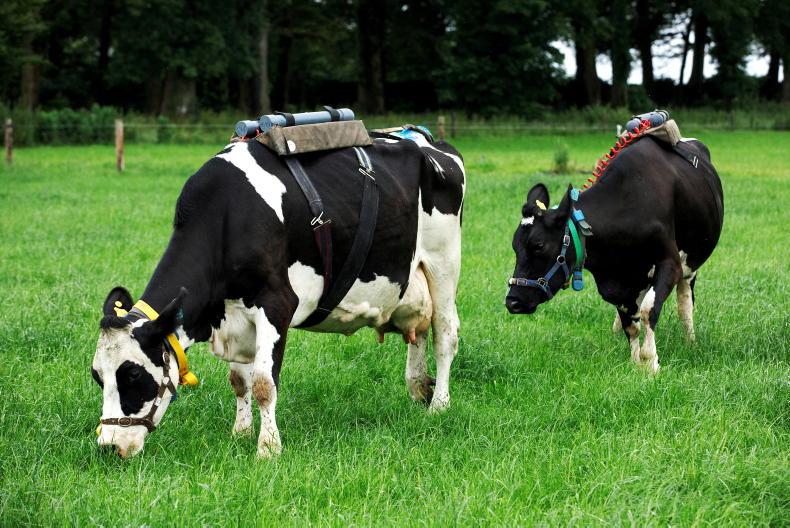The 2019 Marginal Abatement Cost Curve (MACC) measures alone will not be enough to curb emissions in line with the targets set in agriculture’s carbon budget, Teagasc told the Food Vision Dairy Group this week.
Irish agriculture will have to reduce its emissions by 22% to 30% by 2030 under the plan.
A presentation from Teagasc’s Kevin Hanrahan told stakeholders at Monday’s meeting that the current MACC measures will mitigate around 2m tonnes of carbon dioxide equivalent (CO2eq).
However, reaching the “lower end of the carbon budget range [is] only possible with additional measures and complete implementation of existing MACC,” he said.
Other measures, called MACC+, which Teagasc said would mitigate emissions, include using feed additives such as 3NOP, which can cut methane emissions from cows by around 30%, and the earlier slaughter of cattle.
A 30% reduction would see dairy incomes fall by €17,500 per annum, beef incomes fall by €2,800 and 56,400 job losses
It also said there are “measures yet to be developed” and the path to deploying such measures isn’t clear.
Teagasc’s assessment is in line with Irish Farmers Journal KPMG report, which found that a cut in emissions of 18% was possible with the application of the current MACC measures and additional new technologies, and that to reach a 30% reduction, a cut in livestock numbers of 18-22% would be required.
A 30% reduction would see dairy incomes fall by €17,500 per annum, beef incomes fall by €2,800 and 56,400 job losses.
The first meeting of the group on Monday set the scene for the weeks and months ahead. The group will meet every two weeks from now on.
Following the meeting, chair of the group Prof Gerry Boyle told RTÉ that measures to stabilise and reduce emissions from the dairy sector must be voluntary for farmers and cannot be imposed.
He said the group “didn’t get into any specific mechanisms” on achieving emissions reductions and said he hadn’t ruled any measures out yet.






 This is a subscriber-only article
This is a subscriber-only article










SHARING OPTIONS: